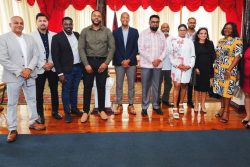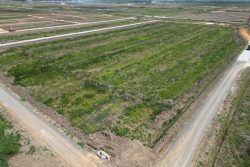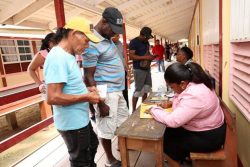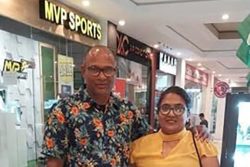Over this past weekend, my team and I participated in the ‘Women in Business Expo’ at Pegasus Hotel. It was an amazing opportunity for a startup business like my own to get in front of our target market, speak to the women whom we are trying to clothe and find out if they would buy what we’re selling.
I noticed a few things from all the conversations that I had, and the more I spoke to them the more clarity I gained on fashion in Guyana and what really went wrong.
What impacted me the most was how shocked people were to find out that the collection was made in Guyana. On one hand, it was great to hear that the quality of our finishing was so aesthetically pleasing. On the other hand, the fact that it was near unbelievable that they were produced right here in Guyana was very telling of the type work produced locally.
Given these revelations, I have settled on three areas those actively invested in the local fashion industry can improve right now to begin the process of revitalization.
Improve the quality of your work
This is the easiest step you can take and anyone can do it. Read more, pay more attention to detail, research, ask for help, and get feedback from customers. Vigorously work at developing your craft, whether it’s sewing, drawing illustrations, creating fashion-focused content or fashion photography. Malcolm Gladwell talks about the 10,000 hours rule in his book Outliers and applies the idea that working at something for 10,000 hours would, to some extent, make you an expert in that area. It is human nature to become better at something by doing more of it.
Find a mentor
This doesn’t necessarily have to be someone in fashion. It would actually be more beneficial to you and your fashion business if your mentor is someone in a different industry. My very first mentor was actually my boss.
All of her experience was in management of some kind, she held three corporate titles at Fortune 500 companies. One of my current mentors is a software developer and web designer. I say this to help you understand that fashion business is still a business. You still need a business plan, market validation, goals and strategies—these are things an experienced businessperson can help you with.
Lobby
The uproar caused by the parking meter situation has shown us a new side of the Guyanese populous. We are now in a place in Guyanese history where the coming together of a group of people in unison creates a catalyst for change. People are forced to listen when there are multiple voices chanting the same slogan. Fashion needs policies that give broader support of artistic development. The industry needs to be recognized at the cross section of art and business. We need critical structural support that focuses on bolstering an industry as impactful as fashion and the young creative class has to be given the right incentive to commit to Guyana.
When I say incentive, I don’t necessarily mean money, but rather opportunity to work and gain experience in their field.
There is a grave misconception about fashion; that it is a frivolous, inconsequential thing. The truth of the matter is it is not. Clothing is what we live our lives in, it’s a necessity that is unavoidable.
I take pride in the fact that I can boldly emblazon ‘Made in Guyana’ on something that holds up to international standards.
I also want other fashion business owners here to feel that sense of pride.
What are your thoughts? Are these suggestions feasible? What do you think can be done for this industry? Email me at glasfordstyle@gmail.com and let me know.








